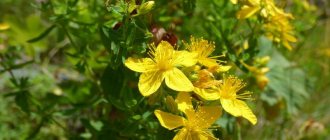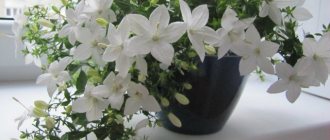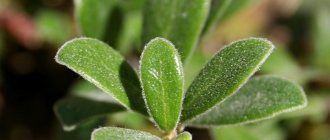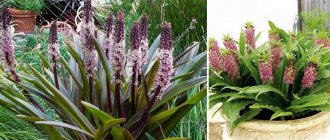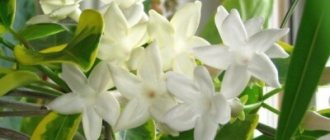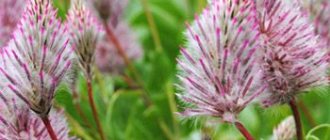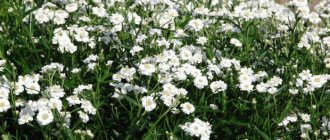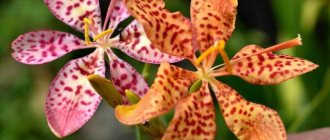Description: Hare's ear
Biennial herbaceous plant, densely planted with tiny, appressed, star-shaped grayish-green hairs. The stem is 50-160 cm tall, erect, ribbed-striped, leafy, branched. Leaves are ovate or lanceolate. The inflorescence is a strongly pyramidal panicle; flowers 2-7, close together; corolla yellow, less often whitish, 12-20 mm in diameter, with transparent dots, pubescent on the outside; capsule elliptical, obtuse, glabrous, 4-5 mm long, 2.5-4 mm wide. Flowering in July-August.
Application: Hare ear
In practical and folk medicine it is used as an anti-inflammatory for gynecological diseases, as well as in the postpartum period. An infusion of flowers, less often leaves, is used for coughs, bronchitis, pneumonia, whooping cough, hemoptysis, inflammatory diseases of the digestive system, bronchial asthma, hoarseness, shortness of breath, acute respiratory infections.
Flower tincture is used for rubbing as a pain reliever for rheumatism, arthritis and neuralgic pain. The powder of the flowers is sprinkled on cracks on the nipples and wounds, having previously smeared them with carrot juice.
Boiled mullein flowers or leaves are applied to inflamed areas, burns, and wounds as an anti-inflammatory, wound-healing and pain reliever. An infusion of flowers, less often leaves, is used to rinse the mouth and throat during inflammatory processes.
A decoction of the roots is used for baths and washes for hemorrhoids. The infusion and the amount of flavonoids in the experiment have cardiotonic, hypotensive, sedative and anticonvulsant properties. An infusion of flowers is recommended for clinical trials as a cardiotonic. Aqueous, ethereal and chloroform extracts exhibit antibacterial activity. The seeds of the plant were previously included in ointments for the treatment of long-term non-healing wounds.
In medicine
Woolly chickweed is not a pharmacopoeial plant and is not used by official medicine, but its healing properties are successfully used in folk medicine. Chistets woolly has a hypotensive, cardiotonic, antispasmodic effect on the human body. The plant has a stimulating effect on the contraction of the muscles of the walls of the uterus, and is successfully used during labor in women, providing an antispasmodic and hemostatic effect.
In order to lower blood pressure or reduce the amplitude of heart contractions, use a dry extract, decoction or tincture of the woolly aster. Decoctions from the rhizome of the plant help with colic, spasms of the intestines and stomach, and have an antispasmodic effect. Decoctions of crushed roots of chistets are effective for colds and tuberculosis.
Contraindications and side effects
Despite many beneficial properties, woolly chickweed also has some contraindications. The plant is not used for hepatitis, chronic and acute nephritis, bronchial asthma, atherosclerosis, hypertension, angina pectoris, and convulsions. Contraindications of chistets apply to children, women during pregnancy and lactation, with individual intolerance and allergic manifestations.
Recipes: Hare's ear
Inflammatory diseases of the respiratory system: 1 tablespoon of dried flowers in 2 cups of boiling water, leave for 2 hours, strain. Application: 1/2 cup warm 3-4 times a day with honey or sugar as tea.
Expectorant and enveloping agent: pour 1 tablespoon of dried flowers with 1 glass of boiling water, leave for 30 minutes, strain. Application: 1-2 tablespoons every 2-3 hours.
Diseases of the upper respiratory tract, shortness of breath, diarrhea, colitis and enterocolitis: 1 tbsp. l. Boil flowers and leaves of mullein in 200 ml of water for 5 minutes, leave for 1 hour, filter. Application: 2 tbsp. l. 3-4 times a day.
Article on the topic: Kuga - useful properties, description
inflammatory diseases of the respiratory system: 3-4 teaspoons of dried flowers per 2 glasses of hot milk or hot water, boil over low heat, in a sealed container, leave for 30 minutes, strain, add honey or sugar to taste. Application: 1 glass at night, warm.
poultices: boil 3-4 tablespoons of flowers or leaves with boiling water, wrap in gauze and apply to sore spots.
gout, rheumatism, neuralgia: pour 50 g of flowers into 0.5 liters of 40% alcohol, leave for 10-12 days, strain. Application: use for rubbing into sore areas.
Hare ears (flower): photo, application, treatment, description
• Botanical characteristics, description
Hare's ear, translated as Verbascum lychnitis, the second name of the plant mealy mullein or paniculata, it is a herbaceous biennial, its branched stems are densely planted with tiny hairs, they are star-shaped, colored grayish-green. The height can reach 160 centimeters. The leaves are ovate or lanceolate in shape.
The inflorescence of this representative of the flora is represented by a pyramidal panicle, the flowers are close together; The corolla is yellow, less often it is white, up to two centimeters in diameter, with transparent dots, some pubescence can be seen on the outside. The fruit is shaped like an elliptical capsule.
This plant grows in chernozem territory, it can be seen on rocky terrain, in dry meadows, and it is also localized along roads, sometimes growing along shelterbelts in the chernozem zone of the European part of Russia, on the northern banks of rivers.
This plant is used as a whole; its roots, flowers, leaves and stems are used for medicinal purposes. Various drugs are prepared from its raw materials that help with certain diseases, among the components the following compounds can be noted: carbohydrates, ascorbic acid, myoinositol, iridoids, tannins, saponins, alkaloids, coumarins, flavonoids, alcohols, ursolic acid, alpha-spinasterol, and some other components.
• Collection and preparation of plants
In order to prepare hare's ear grass, you need to wait until it blooms. After that, the required amount of raw material is cut off with a sharp sickle or pruning shears and sorted qualitatively, while paying attention to the presence of damaged and rotten specimens, which should be discarded from the main mass.
Next, the raw materials are laid out on a flat container, for example, you can use a tray, it is advisable to line it with paper, after which the hare’s ear grass is laid out in a thin layer. It is worth knowing that it is necessary to turn the harvested plant over every day to prevent it from becoming damp and subsequent rotting.
When the grass takes on a dry appearance, it should be packaged in cloth bags. They are placed in a well-ventilated area and stored for two years, after which the raw materials should not be used.
• Application of mealy mullein
Traditional healers use this plant to prepare some medicinal potions that have an anti-inflammatory effect on the body. The infusion is used in the presence of gynecological diseases, bronchitis and pneumonia, whooping cough, bronchial asthma, hemoptysis, shortness of breath, as well as respiratory infections.
A tincture prepared from the flowers of mealy mullein is used topically as an anesthetic; it is usually rubbed into the area of affected joints for arthritis and rheumatism, as well as for neuralgic pain.
Powder made from flowers is also used; it is usually recommended to sprinkle it on the wound surface, cracks in the nipples, and any wounds. In this case, fresh leaves can also be used; they are applied to burns, to inflamed areas, as they will have a wound-healing and analgesic effect.
Article on the topic: Istod thin-leaved - useful properties, description
It is recommended to rinse the mouth and throat with infusion if there are inflammatory diseases in them. A decoction prepared from the roots of hare's ear is used as a wash in the presence of hemorrhoids.
To prepare an infusion of hare's ear grass, you will need this dry raw material in the amount of a tablespoon, and it must first be thoroughly crushed using a ceramic pestle and mortar.
Next, you should pour the raw material into a glass jar, after which 200 milliliters of boiling water is poured into it, stir everything well and cover with a lid. Then leave the infusion for a while. After an hour, you should strain it; gauze can be useful here, which should be folded in two layers.
The grass that has settled on the gauze should be gently squeezed out, after which it can be thrown away. The infusion is used for its intended purpose as needed. Store it in a cool place for no more than three days. After this time, you should get rid of the drug, as it can ferment and, if consumed, harm your health.
To prepare a tincture based on this plant, you will need 20 grams of paniculata mullein raw material. It should first be thoroughly ground in a ceramic mortar until it is thoroughly crushed.
Next, the prepared herbal mass is poured into a prepared dry and dark bottle, after which 200 milliliters of alcohol are poured into it, then everything is shaken well, and the container is stored for a week or ten days in a dark place, for example, you can put this dish in a kitchen cabinet.
After this time, it is recommended to filter the drug, for this you can use gauze, after which the infusion is ready for use, it can be used for rubbing into sore joints. It can be stored for quite a long period of time.
Before directly using drugs prepared from hare’s ear, it is recommended to consult a qualified doctor, and it is better to avoid using infusions and tinctures on your own.
Chistets woolly (Stachis Byzantine): description and characteristics of the flower
Woolly Chistets (also known as Stachys Byzantine) is popularly called differently: hare's ears, blackberry, tenacious .
A perennial herbaceous ornamental plant from the Lamiaceae family, with a creeping rhizome, pubescent oblong silvery leaves and a pleasant aroma of small pink flowers.
It reaches a height of 40 cm, the flowering period lasts all summer. The fruit is a nut with three sides.
It grows wild in central Eurasia and Mediterranean countries, the Caucasus, and sometimes in Africa.
The plant is perennial, blooms all summer, height up to 40 cm
Hemanthus in nature
The hare's ear flower is a heat-loving plant. In the wild, it grows in tropical Africa in the Cape Province. Here on the mountain slopes in the shade of spreading bushes this plant feels simply excellent. The name “hemanthus” was coined for it by Carl Linnaeus in 1753. It is translated as “bloody.”
Indeed, plants with bright red flowers are mostly common in nature. However, over the centuries, other varieties have been developed that have flowers of a different shade. These include Hemanthus white-flowered. It is also quite a showy plant. Its inflorescence is large in size and looks fluffy due to the large number of stamens.
Hence another name for hemanthus – “hare’s tail”.
How to create favorable conditions for growing from seeds?
To grow stachys, you need to prepare the soil with good drainage ; if the soil is too damp, it will quickly rot and die.
also prefers open areas with a lot of light , so it is widely used in alpine slides for summer residents, in carpet plantings, as well as in borders, it looks very elegant and noble.
Article on the topic: Salt marsh aster - beneficial properties, description
To preserve the decorative appearance of the bush and avoid self-seeding, you need to cut off the flower stalks, preventing the formation of buds .
Also, when the lower leaves disappear, this is a signal that the plant has aged, you need to replant young bushes in order to avoid bald spots.
Woolly chistets, aka stakhis, aka sheep ears:
Reproduction methods
Among the propagation methods that are relevant for the woolly chickweed are the use of seeds, cuttings or dividing the bush. In the first case, after flowering, false panicles with planting material inside are collected. They are dried, then the seeds are extracted. To plant them, you need a prepared area of open ground or a container with a peat-sand soil mixture.
The seeds are sprinkled on top of the soil, without deepening them, sprinkled with a thin layer of quartz sand on top. Instead of watering, spraying from a spray bottle is used. It is produced daily. The temperature during germination should be maintained in the range of +25 degrees and above; in this case, you can do without a greenhouse. After the sprouts emerge, they are plucked when 2 leaves appear.
Cuttings are an equally popular and much faster method of propagating the woolly guillemot. Strong shoots with 3-4 leaves each are cut from the plant, they are placed in the soil for rooting, and regular but moderate watering is provided. The seedlings are kept together until rooting, then transplanted.
The bush can be divided every 2-3 years. This rejuvenating procedure is performed in spring. Dividing is done manually, then the bushes are placed each in its own hole.
Recommendations for planting and caring for the plant
The chist does not have any special care requirements , as it is quite unpretentious; it is only recommended to water it under the roots, and not to spray water on the leaves.
Once a year (preferably in spring) you can fertilize with rotted compost. It tolerates transplants very well, so you can safely transplant it from place to place.
It is better to take alkaline or neutral soil with a pH of 7 for planting , add a little chalk or dolomite flour and well-rotted compost to it.
Chistets are almost never affected by pests , but in damp conditions they can suffer from fungal diseases.
The soil for sowing must be prepared in advance, enriched with superphosphate (50 grams per 1 sq. m) and potassium sulfate (20 grams per 1 sq. m.) a couple of months in advance.
If planting is done from boxes, then try to leave up to 40 cm between plants for growth.
Chistets goes perfectly with lungwort, silver wormwood and heuchera. These plants are companions; they have a beneficial effect on each other.
Water the plant at the root, fertilize it with compost in the spring, take neutral or alkaline soil for planting
“Sheep ears” in the flowerbed
Chistets Byzantina, also known as Stachys woolly, also known as “sheep’s ears,” is a charming and unpretentious plant with silvery fluffy leaves.
Chistets woolly. Photo by the author
It settled in my garden a long time ago: a neighbor shared the shoots, which have since turned into luxurious fleecy “rugs” and spread in different flower beds. Of course, these “ears” also came to the new garden.
The plants are still small, but next season they will form a nice lawn, and in a year the chickweed can be spread further.
Young plant of chistets. Photo by the author
There are countless options for using this plant in flower beds. This is an excellent border : the bushes without flower stalks are not tall, grow very densely and, due to the elegant silver color of the foliage, create an impressive frame for a flower bed or garden path.
The woolly chickweed looks great and feels great in rockeries , on retaining walls , and in rocky gardens . It is undemanding to the soil, tolerates drought easily, loves light - an ideal plant for a rock garden.
Chistets seeds and seedlings are presented in our catalog by various online stores. View the selection.
On the other hand, it also grows well in partial shade, and therefore can be successfully planted under bushes. In such a composition, the cool color and unusual texture of chistets leaves can become a winning accent. It is only important to make sure that the shadow is not too thick, and that the neighbors are undemanding when it comes to food. On too fertile soil and insufficient lighting, sheep's ears can turn green and lose their charm.
with other decorative foliage plants leave endless scope for imagination . Here, for example, is how it nestled between my hostas and cypress spurge on the shore of a pond
Chistets with hostas by the pond. Photo by the author
The Chistets' own flowers are nothing special, and the tall, often unstable peduncles make the plantings untidy. So I try to cut them off; when the plant is grown as an ornamental foliage, this procedure is very desirable. Moreover, caring for the cleaner actually ends there.
But how expressive the luxurious, silky foliage is against the background of other flowers! Thanks to its neutral color, chistets are appropriate in almost any composition, and will look new every time. I especially like restrained, noble combinations with blue and white flowers, but red, yellow, pink, and lilac look, perhaps, no worse. Here, admire, for example: chives against the background of blooming chives
Woolly Chistets against the background of chives. Photo by the author
By the way, both spring and autumn are suitable planting woolly grass At the same time, you can divide old, overgrown plants, the rooted shoots of which are easily separated and take root well in a new place.
I read that in regions where winters are harsh, light shelter for plants is recommended, but mine winters well without it. And in early spring, it is enough just to remove the old, browned and dried foliage and take care that water does not stagnate at the roots of the plant - this is its main enemy , causing root rot and death of the plant.
I also like to stroke the leaves, which are soft and extremely pleasant to the touch. Great mood lifter!
Leaf of the woolly chickweed. Photo by the author
If you don't yet have chickweed growing in your garden, try finding a small corner for it. I'm sure you will definitely love these nice “sheep ears”!
